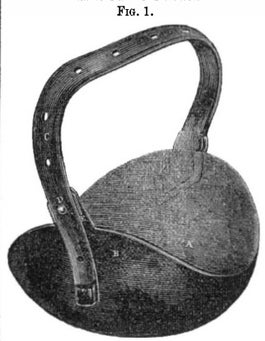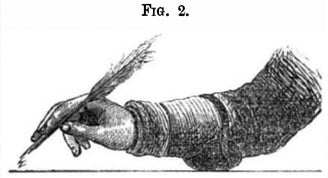This article was published in Scientific American’s former blog network and reflects the views of the author, not necessarily those of Scientific American

As anyone who has written by hand over the course of a lengthy sitting knows, comfort can quickly become an issue. The October 22, 1853 issue of Scientific American featured an invention recently patented by Joseph G. Goshon of Shirleysburg, PA and William H. Towers of Bucyrus, OH called the "Elastic Pad for Penmen."
The Elastic Pad, shown above, was made of either India rubber or an air cushion with a convex outside and concave inside. The pad was secured to the arm at the elbow or any other point under distress by a leather band fitted with a number of buttonholes to allow for various arm sizes. By giving flexible support to the arm, the device claimed to help fingers from cramping and becoming numb. "One of these pads or cushions will last for a number of years, and besides being a relief to the writer, will soon save the amount paid for it in preserving the coat sleeve."
On supporting science journalism
If you're enjoying this article, consider supporting our award-winning journalism by subscribing. By purchasing a subscription you are helping to ensure the future of impactful stories about the discoveries and ideas shaping our world today.

I can’t say that I’ve ever worn through a coat sleeve from writing at length, but I could’ve really used something like this while grueling through 3 hour written exams in college. Now, looking around the office, I’ve noticed a number of people using mouse pads and keyboards with gel wrist pads attached—a true testament to the problem identified and confronted by Goshon and Towers over 150 years ago.

About the Author: Mary Karmelek is a production assistant for Nature Publishing Group and is currently working on Scientific American's Digital Archive Project, where she spends countless hours scouring articles and ads of decades long ago. She graduated with her MA in English from Fordham University in 2010 and currently resides in New York City. While her educational background is in gender and war trauma in modernist literature, Mary also has a keen interest in the historical and visual documentation of science, nature and medicine.